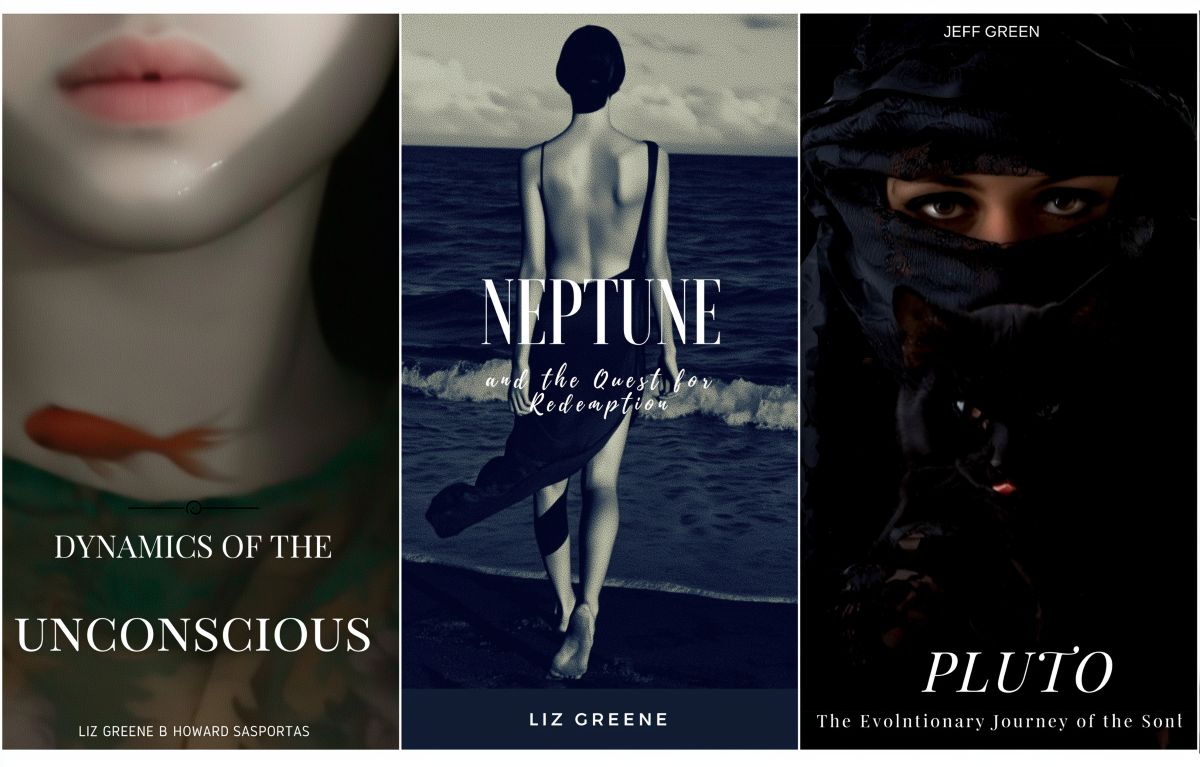
Become a Modern Astrology Master with These Transformative Books!
Astrology for Lovers
 Liz Greene’s Astrology for Lovers is a psycho-spiritual examination of our lovesick little selves. Liz Greene, in her mystical, psychological witchery, doesn’t simply tell you, “A Leo will be bossy” or “A Pisces will cry into their cereal .” No, she dives deep into the archetypal underbelly of each sign. She understands, as all the best healers do, that love isn’t only an affair of chocolates and kisses; it’s a battleground of primal wounds seeking healing, often through the bewildering, beautiful, and tragic medium of another person. Astrology — particularly in the hands of someone as clever as Greene — becomes a map of potential consciousness. Her look at the “shadow” aspects is what elevates this book from being just another horoscope column dressed up in fancy words to being a full-blown, Jungian exploration. The brilliance lies in her insistence that each sign’s flaws — the jealousy of Scorpio, the stubbornness of Taurus, the escapism of Pisces — are not moral failings, but adaptive strategies. Each vice, a virtue fallen out of tune. Each clingy Cancer and arrogant Aries just trying, in their own cosmic way, to love and be loved without fear.
Liz Greene’s Astrology for Lovers is a psycho-spiritual examination of our lovesick little selves. Liz Greene, in her mystical, psychological witchery, doesn’t simply tell you, “A Leo will be bossy” or “A Pisces will cry into their cereal .” No, she dives deep into the archetypal underbelly of each sign. She understands, as all the best healers do, that love isn’t only an affair of chocolates and kisses; it’s a battleground of primal wounds seeking healing, often through the bewildering, beautiful, and tragic medium of another person. Astrology — particularly in the hands of someone as clever as Greene — becomes a map of potential consciousness. Her look at the “shadow” aspects is what elevates this book from being just another horoscope column dressed up in fancy words to being a full-blown, Jungian exploration. The brilliance lies in her insistence that each sign’s flaws — the jealousy of Scorpio, the stubbornness of Taurus, the escapism of Pisces — are not moral failings, but adaptive strategies. Each vice, a virtue fallen out of tune. Each clingy Cancer and arrogant Aries just trying, in their own cosmic way, to love and be loved without fear.
Greene starts not from the assumption that people want to be better lovers in some mechanical sense, but from the truer, more painful knowledge that people long, above all, to be understood. Through her piercing insight, she reveals that love isn’t some pristine fairy tale where two perfectly matched beings float together like swans; it’s an awkward clash of two entire universes — each spinning with its own neuroses, its own dark history, its own hidden griefs. She understands that the true adventure of love lies not in perfect compatibility, but in the mutual exploration of those secret continents within each other.
Astrology for Lovers is a collection of grown-up bedtime stories, where each myth isn’t just a pretty tale to lull you to sleep, but a coded map straight into the maze of your own heart. Liz Greene doesn’t just recount myths for ornamentation; she decodes them like a priestess of the old ways, showing how these symbols still live inside us, pacing the cages of our modern psyches. So many so-called “love guides” want to pat you on the head, tell you you’re perfect, that love will find you if you just wear a bit more perfume and manifest harder. Liz takes your hand and says, “You are beautiful — but you’re also bloody complicated. And you’re going have to look that in the eye if you want the real thing.” She doesn’t mock our insecurities, nor does she wallow in them. She gives them dignity. She tells you why the Scorpio clutches so tightly, why the Gemini sometimes flits away mid-conversation, why the Capricorn builds those mighty emotional walls. And she explains that it’s not because we’re bad or broken — it’s because somewhere deep in our history, we believed we had to be that way to survive.
Liz Greene says,
Let us now focus our attention on Virgo. Known for their precision, orderliness, and meticulousness—particularly in the realm of thoughts if not always in practical matters—Virgos reveal themselves in two distinct manifestations. The first kind meticulously maintains a spotless environment, incessantly emptying ashtrays and meticulously planning every detail. This inclination is most apparent when Virgo dominates the ascendant. The second type, seemingly congenitally sloppy, possesses minds akin to a filing cabinet. While objects may escape their grasp, memories, facts, and the latest books remain etched indelibly in their consciousness.
Ruling Planets
 Ruling Planets somehow manages to take the spinning mystery of the zodiac — the thing that has bewitched us for millennia — and suddenly, it all feels immediate, personal, and thrillingly alive. And the artwork! This isn’t some dry astrological directory with dusty charts and squinting glyphs. It’s a feast — a sumptuous visual journey where you’re paging through history, myth, pop culture, and personal destiny all at once, and somehow it works. What Renstrom does, much like Liz Greene but with his own swagger, is pull astrology back down from the ivory tower and plant it firmly in your daily life. You don’t read this book to memorize facts; you read it to feel seen. You read it and think, “So that’s why I’m always the one charging into the fire… or slinking away at the important moment… or falling helplessly in love with chaos.” It’s astrology’s wicked grin — and isn’t this just what we need sometimes, when life feels too heavy or the heavens too far away?
Ruling Planets somehow manages to take the spinning mystery of the zodiac — the thing that has bewitched us for millennia — and suddenly, it all feels immediate, personal, and thrillingly alive. And the artwork! This isn’t some dry astrological directory with dusty charts and squinting glyphs. It’s a feast — a sumptuous visual journey where you’re paging through history, myth, pop culture, and personal destiny all at once, and somehow it works. What Renstrom does, much like Liz Greene but with his own swagger, is pull astrology back down from the ivory tower and plant it firmly in your daily life. You don’t read this book to memorize facts; you read it to feel seen. You read it and think, “So that’s why I’m always the one charging into the fire… or slinking away at the important moment… or falling helplessly in love with chaos.” It’s astrology’s wicked grin — and isn’t this just what we need sometimes, when life feels too heavy or the heavens too far away?
Christopher Renstrom sees beyond the lazy clichés. He knows that calling a Piscean “dreamy” is a bit like looking at a vast, glittering ocean and saying, “It’s just water, isn’t it?” It misses the storms, the shipwrecks, and the hidden cities beneath the surface. Pisces is not simply lost — they are voyaging. When a Piscean retreats into imagination, it’s because they are doing the often thankless work of reimagining life, healing it, dreaming new futures into being. They are alchemists of the inner realms, drawing gold from places most people are too frightened to even visit. Every emotion, every fragment of longing or sorrow, gets spun into the epic unfolding behind their gentle eyes. They’re living a thousand lives all at once, dancing between dimensions while the rest of us trudge through the grocery store, wondering where we parked the car.
And yet, tragically, the world often demands their conformity. It tugs at them with deadlines and taxes and grim fluorescent offices, and when they fail to look thrilled about it, they’re accused of being impractical or naïve. But if only people could glimpse their inner worlds, the vast dreamscapes, the heartbreakingly beautiful images they see in their minds! They would fall to their knees, weeping, overcome by the terrible heartbreak of it all.
Pisces, in their tireless dreaming, are the keepers of the liminal space — a thin, shimmering veil where what is collides with what could be. They remind us, through their very being, that life isn’t merely about paying bills and making sensible decisions; it’s about exploring the uncharted galaxies behind our eyelids. Their dreams aren’t empty escapism; they’re acts of creation, blueprints for realities not yet born but sorely needed. In a culture that prizes practicality, speed, and efficiency, the Piscean soul is often looked at with bemusement, even suspicion — as though their imagination were a cute hobby rather than a form of cosmic resistance. But really, they’re doing holy work. They are the quiet revolutionaries, gently pulling back the grimy curtains of consensus reality to reveal the technicolour palaces hidden just beyond our reach.
To the Piscean, the so-called “real world” isn’t the final authority — it’s a single chapter in a vast, ongoing saga. Their visions, far from being indulgent or impractical, are bridges into the next great unfolding of human potential. Without their dreaming, the world would calcify into a soulless machine, moving along without mystery, without magic, without meaning. Every great leap forward, every spark of art, invention, spiritual insight — somewhere behind it, you’ll find the footprint of a dreamer who dared to believe that something more was possible.
The Development of the Personality
 The Development of Personality is a journey down the swirling, subterranean rivers of the soul. Liz Greene and Howard Sasportas don’t simply describe childhood or parenting in neat psychological terms; they reveal it as a kind of theatre where the first great dramas of the human spirit are played out under the watchful eyes of the stars. They take us back, gently but unflinchingly, to those earliest blueprints — the inherited temperaments, the early fumblings of mother and father, the archetypal energies already active in our tiny, vulnerable beings. Greene and Sasportas show us that even in the cradle, we are already confronting the mighty mythologies of human existence: longing, rejection, belonging, individuation. But crucially, they do not present this as a cold fate, a mechanical inheritance over which we have no say. Instead, they treat it as a living conversation between soul and circumstance. The natal chart — our magical map of potential — interacts with the environment, the family, the society, to create the unique, unrepeatable phenomenon that is you. It isn’t deterministic; it’s dynamic. It’s messy, mysterious, and infinitely meaningful. In this work, they speak of the stages of childhood with reverence, as though they are speaking of a hero’s journey in miniature. Each child’s struggles — to find love, to express anger, to form an identity — are treated as the early movements in the act of becoming.
The Development of Personality is a journey down the swirling, subterranean rivers of the soul. Liz Greene and Howard Sasportas don’t simply describe childhood or parenting in neat psychological terms; they reveal it as a kind of theatre where the first great dramas of the human spirit are played out under the watchful eyes of the stars. They take us back, gently but unflinchingly, to those earliest blueprints — the inherited temperaments, the early fumblings of mother and father, the archetypal energies already active in our tiny, vulnerable beings. Greene and Sasportas show us that even in the cradle, we are already confronting the mighty mythologies of human existence: longing, rejection, belonging, individuation. But crucially, they do not present this as a cold fate, a mechanical inheritance over which we have no say. Instead, they treat it as a living conversation between soul and circumstance. The natal chart — our magical map of potential — interacts with the environment, the family, the society, to create the unique, unrepeatable phenomenon that is you. It isn’t deterministic; it’s dynamic. It’s messy, mysterious, and infinitely meaningful. In this work, they speak of the stages of childhood with reverence, as though they are speaking of a hero’s journey in miniature. Each child’s struggles — to find love, to express anger, to form an identity — are treated as the early movements in the act of becoming.
The exploration of parent-child relationships especially glows with insight. They show how even the best-intentioned parents inevitably bring their own their own unresolved archetypes into the child’s story, creating both wounds and gifts. This isn’t about blame; it’s about understanding, about seeing the patterns as invitations to consciousness and healing. In this way, The Development of Personality isn’t only just for astrologers or psychologists; it’s for anyone who has ever asked, “Why am I like this?” or “How can I become more fully myself?”
In the section, The Parental Marriage in the Horoscope, it feels like peeling back the final velvet curtain to reveal the hidden parts of our inner world: the primal dramas, the alliances and betrayals, the unspoken vows we make to ourselves about who we must become — or must never, ever become. What Greene so brilliantly captures here is that family dynamics are archetypal. The parents become, in the child’s inner theatre, mighty figures — gods and monsters alike — representing vast forces of nature and psyche. And from these titanic presences, the child must carve out a self.
Many of us have made desperate inner promises about our parents without even realizing it — sometimes in anger, sometimes in sorrow: ‘I will never be like him.’ ‘I will be everything she was not.’ But of course, in striving to be the opposite, we are still bound, still defined by what we resist. The shadow looms, waiting to be integrated, if only we have the courage to see it. Astrology, in Greene’s hands, becomes the cipher to decode these silent familial treaties. She shows us how different elements in the chart — air versus water, fire versus earth — can represent the great divides between our parents’ ways of being. Maybe one parent is the cold intellect, the other the chaotic wellspring of feeling. Maybe one is rooted, stolid, practical; the other burns with restless ambition. And the child, gazing up with wide and bewildered eyes, must find a way to ally, to rebel, to synthesize.
What’s so humane about Greene’s writing is that she never falls into simplistic villainy. The parents are not monsters; they are themselves fractured beings, carrying their own ancient wounds, their own unmet needs. And so the patterns repeat, winding through the generations like ivy through old stone, until someone — perhaps with the light of astrology in hand — chooses to see, and to heal. Parts of the chart reflect different parental influences to give us a map, not to assign blame, but to understand the forces that have shaped us — and ultimately to reclaim those divided parts of ourselves. To see that the cold intellect and the torrential emotion are both ours, both vital, and both waiting to be expressed.It’s a hall of mirrors. Each one more unsettling, more revealing than the last. Some mirrors show us the child who still yearns for approval. Some show the rebel who defined themselves by defiance. Some even show the ghost of a parent, staring back through our own eyes when we least expect it.

These early connections, the primal mergers and clashes with our parents that happened once, long ago. They are still cooking, still bubbling away in the deep cauldrons of our unconscious, influencing every love we seek, every rejection we fear, every loyalty we cling to long past its usefulness. Liz Greene and Howard Sasportas show us that we are all, in some sense, alchemical experiments — forever transmuting the lead of early wounds into the gold of awakened consciousness. It’s disorienting, yes. Painful. To realize that much of what we thought was ourself — our preferences, our triggers, our patterns in love — might actually be echoes of those first formative influences. To realize that some of what we cling to is habit born of old necessity. But there is such grace in this realization too. Because if we can see it — if we can look with open eyes and open hearts — we can begin to choose differently. We can love without reenacting the old dramas. We can grieve what we didn’t get, rather than forever searching for it in doomed repetitions. We can bless our past, even the painful parts, and step forward with greater intention, and greater compassion.
What about Moon-Uranus aspects? Let’s look at the hard aspects first. The child is born with an inner image of the mother as erratic, inconsistent, or unpredictable. The mother may actually be like that, or the child with this aspect is predisposed to notice when she is acting that way rather than other ways. When I put the archetype of the Moon together with the principle of Uranus, I think of a mother who may not be that comfortable with the maternal role. The traditional Moon-Mother is the Earth-Mother. However, if Uranus touches something then it will bring out the less conventional sides of the archetype or principle it aspects. Therefore, the mother may not have been experienced as a traditional maternal type mother…Many people with Moon-Uranus aspects have reported to me that they felt their mothers would have liked to be doing something else rather than being at home changing nappies and washing dishes. The picture I have of a Moon-Uranus mother is someone holding and feeding the child but her mind is off somewhere else. She is thinking about the future, or other things she might be doing, or of something she saw on television.
Dynamics of the Unconscious
 Dynamics of the Unconscious is a read you descend into — like stepping through a trapdoor into the cellar of your own being. Liz Greene and Howard Sasportas once again act as our compassionate psychopomps, leading us not away from the darkness, but deeper into it. This volume pierces the polite façades we wear for daily life and taps straight into the writhing undercurrents: the rage we pretend not to feel, the sadness that drifts like fog through our most ordinary moments, the hunger for transcendence we hardly dare admit even to ourselves. And what a gift that is — to have these aspects not demonized or prettified, but honored as essential parts of the human experience. The chapters on aggression and depression, for instance, don’t frame these forces as dysfunctions to be cured, but as vital expressions of inner conflict, necessary eruptions from the deep unconscious. Greene and Sasportas understand that every dark tide — every fit of rage, every black night of despair — is, astrologically speaking, tied to the great cosmic rhythms: the hammering Mars energy seeking an outlet, the heavy Saturnian weight pressing the soul into confrontation with its limits. And then there’s the wondrous thread running through the book: alchemy. They take this old, shimmering symbol — the transformation of base metals into gold — and show how it lives within us, especially within the horoscope. The chart becomes a realm where the raw material of the psyche is subjected to the fires of life experience, purified, and transformed. Our wounds, our losses, our failures — all are the dark matter that, through consciousness and effort, can become the shining gold of wisdom.
Dynamics of the Unconscious is a read you descend into — like stepping through a trapdoor into the cellar of your own being. Liz Greene and Howard Sasportas once again act as our compassionate psychopomps, leading us not away from the darkness, but deeper into it. This volume pierces the polite façades we wear for daily life and taps straight into the writhing undercurrents: the rage we pretend not to feel, the sadness that drifts like fog through our most ordinary moments, the hunger for transcendence we hardly dare admit even to ourselves. And what a gift that is — to have these aspects not demonized or prettified, but honored as essential parts of the human experience. The chapters on aggression and depression, for instance, don’t frame these forces as dysfunctions to be cured, but as vital expressions of inner conflict, necessary eruptions from the deep unconscious. Greene and Sasportas understand that every dark tide — every fit of rage, every black night of despair — is, astrologically speaking, tied to the great cosmic rhythms: the hammering Mars energy seeking an outlet, the heavy Saturnian weight pressing the soul into confrontation with its limits. And then there’s the wondrous thread running through the book: alchemy. They take this old, shimmering symbol — the transformation of base metals into gold — and show how it lives within us, especially within the horoscope. The chart becomes a realm where the raw material of the psyche is subjected to the fires of life experience, purified, and transformed. Our wounds, our losses, our failures — all are the dark matter that, through consciousness and effort, can become the shining gold of wisdom.
In Dynamics of the Unconscious, the authors dare to tread where so many fear to go: into the marrow of despair itself. They treat depression as a solemn and necessary rite of passage — a descent into the Underworld where the soul, stripped of its superficial comforts, discovers its true mettle. Their perspective is radical because it’s profoundly compassionate. They don’t rush to “fix” depression, nor do they minimize its agonies. Instead, they invite us to sit with it, to listen to what it’s asking of us. Because within the terrible stillness — within Saturn’s heavy chains and Pluto’s annihilating purgations — there lies an opportunity.
Saturn, the great taskmaster, is depicted as the planet that crushes illusions of dependency and demands that we discover our own center of gravity. Depression under Saturn’s influence strips away false hopes and easy comforts, compelling the soul to find strength from within. And Pluto! The dark, relentless guide drags us through ego death, tearing away the pretty lies we tell ourselves. In Pluto’s depressive terrain, everything that is false must perish so that something indestructible and true can be born. It’s no wonder Greene treats Pluto transits with the gravitas of a spiritual initiation — because they are. They are the black nights of the soul that precede the dawning of new consciousness.
Through this lens, depression isn’t meaningless suffering but a soul-work, a slow, brutal forging in the fires of necessity. And when we emerge — if we have faced ourselves honestly, if we have wept the necessary tears and surrendered the unnecessary dreams — we do not emerge as the same fragile being who first fell into darkness. We rise, changed. Tempered. Capable of standing alone with dignity and strength. Capable, at last, of living from the core rather than from the mask.
Instead of seeing depression, pain, and inner conflict as signs of failure, Greene and Sasportas reveal them as thresholds, rites of passage into greater authenticity. They’re not suggesting some glib, chirpy silver lining nonsense. They’re pointing to the hard-won, blood-and-bone wisdom that comes from enduring, from understanding, from becoming. Saturn and Pluto, are the true spiritual teachers in this vision. Saturn humbles us, disciplines us, shows us our limits so we can build something real. Pluto devastates us — yes — but only so that something more essential, more true, can rise from the ashes. In the furnace of loss, abandonment, betrayal, or failure, our illusions are burned away, leaving behind a clearer, fiercer version of the self. Our dreams of perfect parenting, perfect lives — they are so so human — and yet so easily sabotaged by the deeper, unseen currents within us. Greene’s work doesn’t shame us for this; it shows us that the unconscious isn’t an enemy to be conquered, but a realm to be befriended. Only by entering its realms can we start to see the real forces at play — and from there, real healing becomes possible.
The Luminaries
 In this exquisite work, Greene and Sasportas breathe new life into the Sun and Moon, bringing them alive as living, breathing forces at the very core of our being. The luminaries are the twin engines of our becoming: our purpose and our heart, our drive and our safe space. The Sun is our individuality. It’s the call to step out of the long shadows of family, tradition, and early conditioning — to carve out a life that is truly ours. But the authors are wise enough to show that this is not an easy task. The Sun’s journey isn’t a straight-line ascent into glory; it’s a “journey.” We must leave the safe harbor of old expectations, shed the comforting masks of inherited identity, and walk determined toward our own soul’s light. Vocation, in this telling, is the deep, often quiet calling that draws us toward meaning, toward living a life that feels real. Without heeding this call, life can easily curdle into hollow achievement or aching emptiness — the Sun denied its birthright to shine. And then there is the Moon — dear, secretive Moon — keeper of our inner tides, our emotional memory, our needs for security and connection. The Moon represents belonging. It cradles our child-self, holding the old myths of home and hunger and comfort in our dreams. Greene’s exploration of the Moon’s phases and mythology reminds us that we are cyclic beings, that just like the Moon we must wax and wane, grow and retreat, celebrate and grieve. The Lunation Cycle becomes, in this book a living rhythm to align with — an intimate cycle through which we can better understand our moods, our urges, our longings.
In this exquisite work, Greene and Sasportas breathe new life into the Sun and Moon, bringing them alive as living, breathing forces at the very core of our being. The luminaries are the twin engines of our becoming: our purpose and our heart, our drive and our safe space. The Sun is our individuality. It’s the call to step out of the long shadows of family, tradition, and early conditioning — to carve out a life that is truly ours. But the authors are wise enough to show that this is not an easy task. The Sun’s journey isn’t a straight-line ascent into glory; it’s a “journey.” We must leave the safe harbor of old expectations, shed the comforting masks of inherited identity, and walk determined toward our own soul’s light. Vocation, in this telling, is the deep, often quiet calling that draws us toward meaning, toward living a life that feels real. Without heeding this call, life can easily curdle into hollow achievement or aching emptiness — the Sun denied its birthright to shine. And then there is the Moon — dear, secretive Moon — keeper of our inner tides, our emotional memory, our needs for security and connection. The Moon represents belonging. It cradles our child-self, holding the old myths of home and hunger and comfort in our dreams. Greene’s exploration of the Moon’s phases and mythology reminds us that we are cyclic beings, that just like the Moon we must wax and wane, grow and retreat, celebrate and grieve. The Lunation Cycle becomes, in this book a living rhythm to align with — an intimate cycle through which we can better understand our moods, our urges, our longings.
The Moon, traditionally, is the mother of matter, of form, of instinct. She tugs at the tides of the ocean and the tides within our hearts, reminding us of our flesh-and-blood needs for safety, comfort, intimacy. But when the Moon falls into Aries, Leo, or Sagittarius, she burns with a yearning far beyond survival. She becomes a flame within the waters — a contradiction, a call to mythologize the everyday. This fiery Moon wants to live in a story worth telling. She craves a life imbued with meaning, drama, and heroic narrative. Even the smallest, most mundane acts — shopping for groceries, walking the dog — are laced with the possibility of significance, of magic.
Yet, this yearning can create tension. The Moon’s ancient realm is rooted in the body, the senses, the cyclic needs of life itself. The fiery Moon may grow restless or frustrated with the earthy, repetitive demands of embodiment. She may dream of dragons and chivalric quests while the laundry piles up. And so the soul is caught between longing for mythic grandeur and the humbling necessities of mortal existence.
The fiery Moon aches for a life that feels significant. She cannot be content with a flat existence measured in utility bills and Monday morning alarm clocks. She needs her life to feel like a saga — to wake each day as a soul standing on the edge of a great adventure. This Moon yearns for enchantment the way lungs yearn for air. Without it, she withers. Without it, the soul becomes parched, brittle, and restless. Taxes must be paid, yes; groceries must be bought, but the fiery Moon asks — for what purpose? She demands that even the most ordinary life be threaded through with the extraordinary. The knight on the white horse may not come — or he may turn up riding the Number 29 bus, carrying a packet of crisps and a love letter in his heart — but the fiery Moon will find him nonetheless, because her eyes are trained to see the mythic even in the mundane.
And woe to any life that tries to starve her of stories! Without dreams and symbols, the fiery Moon becomes despondent, restless, desperate for some sign that her inner fire was meant for more than mere survival. She needs to believe — not childishly, but profoundly — that life isn’t random, that her struggles and passions are part of some greater arc of meaning. When we honor the fiery Moon, we don’t abandon reality; we re-enchant it. We tell ourselves the stories that sustain us. We make art, we fall in love recklessly, we take absurd risks for the sake of beauty and passion. We live — fiercely, vividly, imperfectly — and that is the task she sets before us.
When we look at the Sun and Moon in the chart, we are beholding the light our journey through existence. The Sun calls us to become who we were born to be. It speaks of destiny, of vocation, of the inner desire to bring our authentic spark into the world, even if we must wrench ourselves free from the clinging vines of old conditioning to do so. Greene and Sasportas capture it so perfectly: tearing away from the past is a slow, soulful labor. It demands from us courage, defiance, forgiveness — and a deep, abiding loyalty to the shining core we carry within.
The Moon — she is no less vital! She is the wordless voice calling us home, even as the Sun calls us outward into the world. She tends to the roots, the unspoken memories, the aching needs that defy the blunt rationality of the mind. She reminds us that even a hero needs a hearth, even the most luminous creator needs the cool shade of intimacy and belonging. Together, the Sun and Moon are where we must both become and belong.
Aspects in Astrology
 Sue Tompkins’ Aspects in Astrology is a veritable collection of aspect interpretations. Tompkins approaches aspects as living dialogues between the archetypal forces within us. Each square, trine, opposition, and conjunction becomes a conversation — sometimes a love story, sometimes a battle, sometimes a long, aching negotiation between two great gods within our souls. Right from the beginning, she shows immense respect for the planets themselves — treating them as actors, each with their own character, their own will, their own yearning. Her early chapters lovingly introduce us to these planetary players, a cast list, ensuring we are not lost when the real drama begins. And once she moves into the aspects themselves — there is depth! She doesn’t just say “Mars square Venus equals sexual tension” and call it a day. No, she unfolds the story: the tensions, the possibilities for growth, the traps we might fall into, and the extraordinary alchemy possible when we work with these energies consciously. In Tompkins’ view, the aspects between planets are not fate handed down from on high; they are dynamic relationships that evolve over time, just like any human connection. They challenge us, frustrate us, seduce us, teach us. They are the inner conversations that either trip us up or, when understood, lift us into greater self-awareness and authenticity. She shows that aspects are the invisible bridges, battlegrounds, and alliances that shape not only how we see the world but how we engage with it.
Sue Tompkins’ Aspects in Astrology is a veritable collection of aspect interpretations. Tompkins approaches aspects as living dialogues between the archetypal forces within us. Each square, trine, opposition, and conjunction becomes a conversation — sometimes a love story, sometimes a battle, sometimes a long, aching negotiation between two great gods within our souls. Right from the beginning, she shows immense respect for the planets themselves — treating them as actors, each with their own character, their own will, their own yearning. Her early chapters lovingly introduce us to these planetary players, a cast list, ensuring we are not lost when the real drama begins. And once she moves into the aspects themselves — there is depth! She doesn’t just say “Mars square Venus equals sexual tension” and call it a day. No, she unfolds the story: the tensions, the possibilities for growth, the traps we might fall into, and the extraordinary alchemy possible when we work with these energies consciously. In Tompkins’ view, the aspects between planets are not fate handed down from on high; they are dynamic relationships that evolve over time, just like any human connection. They challenge us, frustrate us, seduce us, teach us. They are the inner conversations that either trip us up or, when understood, lift us into greater self-awareness and authenticity. She shows that aspects are the invisible bridges, battlegrounds, and alliances that shape not only how we see the world but how we engage with it.
The case studies in this book are not dry clinical examples. The example of Patrick Moore, with his tightly wound T-square between Mercury, Jupiter, and Neptune, is a perfect illustration. What at first glance might seem like an abstract configuration — just a bunch of lines and glyphs — suddenly blossoms into character, into a rich psychological meaning. His brilliant mind, peppered with occasional vagueness and leaps of fancy, becomes an inevitable expression of those conflicting archetypes.
Let’s delve into the Mars-Saturn aspect, a fascinating aspect that weaves together themes of sexuality, control, and personal growth. In the realm of Mars-Saturn, the act of sex and the idea of control become connected. Individuals with this aspect often grapple with complex and conflicting emotions related to the fear of domination in physical intimacy. It’s a landscape where desire and fear coexist, resulting in unique experiences that can vary from person to person. In some cases, those with Mars-Saturn aspects may wrestle with feelings of sexual inadequacy. Consequently, they may focus on becoming sexual “athletes,” emphasizing stamina and endurance rather than the softer, more tender aspects of intimacy. This relentless pursuit of mastery serves as a means to overcome their perceived shortcomings. The lessons learned here are not easily acquired but are etched into our consciousness through personal experiences. Saturn assumes the role of a stern taskmaster, demanding that we confront our fears, limitations, and insecurities, ultimately guiding us toward greater self-mastery.
Saturn a New Look at an Old Devil
 Saturn: A New Look at an Old Devil is nothing short of revolutionary — and it remains, even now, unmatched in its depth and compassion. Where many would have us fear Saturn, painting him as the a god to fear, Greene does something infinitely braver: she redeems him. She shows us that Saturn’s delays, restrictions, and harsh lessons aren’t punishments hurled down by an uncaring universe, but initiations designed to shape the soul. In Greene’s vision, Saturn is the planet of becoming. It’s the kind where you are stripped of your illusions, sometimes your comforts, sometimes even your dreams — and in the aftermath, something tougher, truer, more purer is born. She writes about how Saturn challenges the ego to prevent us from building our lives on foundations that will crumble at the first storm. He demands authenticity, maturity, self-sufficiency — because the soul’s true purpose cannot be fulfilled on wishful thinking and borrowed strength. Saturn says, “Earn it. Build it yourself. Make it real.” What makes Greene’s work so powerful is her psychological insight. She shows how the struggles Saturn brings — fear, loneliness, failure — are not signs of abandonment, but necessary thresholds. Each limitation, each heartbreak, each “no” from the universe is a dark gift, forcing us to find resources within ourselves that we might never have known existed otherwise.
Saturn: A New Look at an Old Devil is nothing short of revolutionary — and it remains, even now, unmatched in its depth and compassion. Where many would have us fear Saturn, painting him as the a god to fear, Greene does something infinitely braver: she redeems him. She shows us that Saturn’s delays, restrictions, and harsh lessons aren’t punishments hurled down by an uncaring universe, but initiations designed to shape the soul. In Greene’s vision, Saturn is the planet of becoming. It’s the kind where you are stripped of your illusions, sometimes your comforts, sometimes even your dreams — and in the aftermath, something tougher, truer, more purer is born. She writes about how Saturn challenges the ego to prevent us from building our lives on foundations that will crumble at the first storm. He demands authenticity, maturity, self-sufficiency — because the soul’s true purpose cannot be fulfilled on wishful thinking and borrowed strength. Saturn says, “Earn it. Build it yourself. Make it real.” What makes Greene’s work so powerful is her psychological insight. She shows how the struggles Saturn brings — fear, loneliness, failure — are not signs of abandonment, but necessary thresholds. Each limitation, each heartbreak, each “no” from the universe is a dark gift, forcing us to find resources within ourselves that we might never have known existed otherwise.
Saturn isn’t the destroyer of dreams but the necessary builder — the one who says, “If you would build something that endures, it must be built slowly, carefully, from the inside out.” Greene doesn’t sell comfort. She doesn’t promise instant enlightenment wrapped in a shiny package. No — she respects us too much for that. She invites us into the long, often lonely journey of patience, perseverance, and ultimately, profound liberation. Saturn doesn’t hand us mastery; he demands that we earn it, through trials that test our mettle and through loneliness that teaches us the immeasurable value of standing alone.
It’s not about submission to suffering; it’s about transmutation. It’s about looking into the very face of hardship, limitation, fear — and finding there not an enemy, but a unrelenting love. A love that says: “I will strip away your illusions so you can know yourself. I will deny you the easy way so you can discover your strength. I will leave you alone in the dark so you can find your own inner light.” Her exploration of Saturn’s aspects and synastry contacts is a masterclass in this wisdom. She shows how Saturn’s influence in relationships often brings a grave seriousness, a sense of duty, sometimes a feeling of burdens too heavy to bear — and yet, through this, relationships can be anchored, deepened, sanctified. It’s the difference between a summer fling and a love that endures across lifetimes. Saturn doesn’t offer fireworks; he offers foundations.
Saturn is only a “malefic” to those who resist the education he offers. To those who clutch at comfort and refuse to see the deeper purpose of their struggles, Saturn may seem a tyrant. But to those willing to bow to the hard wisdom of experience, Saturn becomes a most faithful companion — austere, but endlessly loving in his demand that we grow.
The Art of Stealing Fire
 The Art of Stealing Fire is a torch passed hand to hand through the long corridors of human yearning and rebellion! Liz Greene, with her typical depth, takes Uranus — so often reduced in pop astrology to “eccentricity” or “quirkiness” — and reveals it for what it truly is: a divine force. A crackling current of living Promethean fire, daring to defy the gods of convention, order, and stasis. When Greene speaks of Uranus, she speaks of the irrepressible spark in the human soul that says: “No. I will not kneel. I will not be confined by your small certainties. I will steal the fire, even if it costs me everything.” It invokes Julian Assange — a man whose life practically embodies the Uranian archetype in its highest and most dangerous form. The Sun square Uranus in his chart is a mark of “rebelliousness” or “unpredictability”; it is also a signature of someone fated to collide with the structures of power, someone driven by an inner compulsion to liberate truth, even at immense personal cost. He, like Prometheus, defies the gods to bring hidden light to humanity — and like Prometheus, he pays dearly for it. What Greene shows so elegantly is that Uranus isn’t just about “being different” — it is about being true to a higher, often brutally disruptive calling. Uranus shakes the foundations because something dead must be broken apart so that something alive can emerge. It demands evolution, even revolution, both personal and collective.
The Art of Stealing Fire is a torch passed hand to hand through the long corridors of human yearning and rebellion! Liz Greene, with her typical depth, takes Uranus — so often reduced in pop astrology to “eccentricity” or “quirkiness” — and reveals it for what it truly is: a divine force. A crackling current of living Promethean fire, daring to defy the gods of convention, order, and stasis. When Greene speaks of Uranus, she speaks of the irrepressible spark in the human soul that says: “No. I will not kneel. I will not be confined by your small certainties. I will steal the fire, even if it costs me everything.” It invokes Julian Assange — a man whose life practically embodies the Uranian archetype in its highest and most dangerous form. The Sun square Uranus in his chart is a mark of “rebelliousness” or “unpredictability”; it is also a signature of someone fated to collide with the structures of power, someone driven by an inner compulsion to liberate truth, even at immense personal cost. He, like Prometheus, defies the gods to bring hidden light to humanity — and like Prometheus, he pays dearly for it. What Greene shows so elegantly is that Uranus isn’t just about “being different” — it is about being true to a higher, often brutally disruptive calling. Uranus shakes the foundations because something dead must be broken apart so that something alive can emerge. It demands evolution, even revolution, both personal and collective.
Greene does not allow the reader — or the astrologer — to be lazy in interpreting Uranus. She warns us against the shallow clichés of “you’re unique!” Instead, she demands a more rigorous examination: to understand Uranus is to grapple with the tension between freedom and responsibility, between individuality and collective destiny, between the solitary Promethean hero and the chaotic consequences of his defiance. It isn’t enough to be different for its own sake. Uranus calls us to awaken — to ourselves, to the systems we inhabit, to the unfolding of human consciousness.
In this book, Liz Greene’s invocation of Mary Shelley’s Frankenstein is a stroke of absolute genius — because Dr. Frankenstein is a tale about hubris, and he is the very image of Uranus incarnate: visionary, defiant, a breaker of old boundaries in search of a new divine spark. Greene shows us that it’s an act of disobedience against the stagnation of the status quo. Frankenstein, with the writer’s Sun conjunct Uranus, is a Promethean figure — one who dares to steal the mysteries of life itself from the gods. And yet, Greene does not let us forget the shadow that comes with it: the loneliness, the alienation, the terrible burden of having glimpsed what others have not yet dared to imagine. The Uranian figure, though illuminated, often walks a solitary path — beloved, but often misunderstood or feared by the very society they long to transform.
Uranus symbolizes our ability to glimpse a new order — a vision of humanity, creativity, consciousness itself, evolving beyond its current bounds. Uranian individuals are conduits for future realities breaking into the present moment. They have a strange, intoxicating magnetism because, simply by being who they are, they remind others — however fleetingly — that the world could be otherwise, could be more. Greene’s exploration of Saturn and Uranus transits in this book is like being handed a secret manual for the great tidal shifts of life. Saturn brings contraction, form, boundary; Uranus brings expansion, rupture, revelation. Together, they pull at the soul l — pushing us onward into deeper maturity and wilder freedom.
The Astrological Neptune and the Quest for Redemption
 Liz Greene’s The Astrological Neptune and the Quest for Redemption is work so profound it feels less like reading a book and more like drifting out to sea under a sky full of stars. Greene doesn’t simply explain Neptune; she immerses us in its waters, inviting us to lose ourselves, just a little, in the shimmering, dangerous beauty of the Neptunian realm. This isn’t a planet that can be understood through dry intellectual analysis alone. Neptune must be felt, surrendered to, much like a dream, much like love itself. Published during the Uranus-Neptune conjunction in Capricorn — a moment when the collective was grappling with new visions of structure and spiritual yearning — this book could not have come at a more poignant time. Greene, as always, reads the soul of the era as surely as she reads the soul of the chart. She shows us that Neptune isn’t just about “confusion” or “illusion” — the tired clichés. Neptune is about longing — the deep, aching yearning for transcendence, for union, for a return to some lost paradise. It’s the part of the soul that knows we are destined for something greater. Her exploration of water as the symbolic element of Neptune is masterful. Water — mutable, formless, reflective — mirrors Neptune’s elusive magic. It nourishes, heals, baptizes — but it can also drown. So too with Neptune: its gifts are divine, but only if we do not try to grasp them too tightly, or lose ourselves.
Liz Greene’s The Astrological Neptune and the Quest for Redemption is work so profound it feels less like reading a book and more like drifting out to sea under a sky full of stars. Greene doesn’t simply explain Neptune; she immerses us in its waters, inviting us to lose ourselves, just a little, in the shimmering, dangerous beauty of the Neptunian realm. This isn’t a planet that can be understood through dry intellectual analysis alone. Neptune must be felt, surrendered to, much like a dream, much like love itself. Published during the Uranus-Neptune conjunction in Capricorn — a moment when the collective was grappling with new visions of structure and spiritual yearning — this book could not have come at a more poignant time. Greene, as always, reads the soul of the era as surely as she reads the soul of the chart. She shows us that Neptune isn’t just about “confusion” or “illusion” — the tired clichés. Neptune is about longing — the deep, aching yearning for transcendence, for union, for a return to some lost paradise. It’s the part of the soul that knows we are destined for something greater. Her exploration of water as the symbolic element of Neptune is masterful. Water — mutable, formless, reflective — mirrors Neptune’s elusive magic. It nourishes, heals, baptizes — but it can also drown. So too with Neptune: its gifts are divine, but only if we do not try to grasp them too tightly, or lose ourselves.
The examples of Neptune she draws upon include the tragic figure of Princess Diana. Diana, so beloved, so mythologized, lived out the Neptunian paradox: adored by millions, yet profoundly isolated; a living dream whose own reality often crumbled beneath the weight of collective projection. She was Neptune’s daughter in every sense — embodying love, compassion, sorrow, and the often unbearable burden of being more symbol than woman. Then there’s Elizabeth Taylor and Richard Burton — a love affair saturated in Neptune’s passion, glamour, transcendence, and endless longing. Their union was two mythic forces, larger than life, and thus tragically prone to the inevitable disillusionment that Neptune so often delivers when the dream crashes against the shore of human frailty.
The Astrological Neptune and the Quest for Redemption takes us far beyond the easy clichés of Neptune. Greene shows that Neptune touches every corner of our existence, our careers, our families, our very sense of selfhood — depending on which house it inhabits. Where Neptune falls, there lies our secret vulnerability, our silent hope for transcendence, and, if we are not careful, our greatest disillusionments. Her treatment of Neptune through the houses is a soul map. Neptune in the third house, for instance, doesn’t just mean “creative writing” — it means a mind that aches for a truth more beautiful than mere facts. Neptune in the seventh doesn’t simply mean “idealism in relationships” — it points to the deep, unconscious longing to find God through another person, to dissolve the separateness that defines human experience.
The synastry analysis in this book often brings necessary warnings by Greene. When Neptune contacts another’s personal planets, especially in romance, we feel as if we have found heaven. We see angels in their eyes, hear the music of the spheres in their laughter. But Greene reminds us, with heartbreaking wisdom, that we often fall in love not with the person, but with the dream they represent. And so, the dangerous longing to be “saved” emerges — the yearning to pour all our hopes for redemption, healing, and unconditional love into the frail vessel of another human soul. And inevitably, human beings being what they are — flawed, messy, finite — they fail to embody the dream. And our hearts shatter because we mistook the reflection for the source. One of the deepest lessons Greene offers is this: true redemption cannot come from another. It must arise within. We must become our own dream, our own source of unconditional love, lest we endlessly seek salvation in illusions and shadows.
We believe the dream must live outside of us, because we have been taught, in countless subtle and brutal ways, that we are too flawed, too broken, too mortal to embody it ourselves. And thus, the Neptunian hunger for transcendence turns toxic, spiraling into worship, disillusionment, resentment, and — ultimately — either crucifixion or self-immolation. Liz Greene captures this grim side of Neptune unflinchingly: the redeemer becomes the scapegoat; the adored becomes the despised. We demand impossible perfection, not because they owe it to us, but because our souls are screaming to be reunited with something we believe is forever lost to us. And when they inevitably fall — when their humanity shows through — it feels like a betrayal, but it is really a mirror held to our own misplaced longing.
Alternatively, some of us sacrifice ourselves on the altar of the perceived redeemer’s needs, convinced that by annihilating our own desires, our own needs, our own imperfect, messy selves, we might somehow earn a redemption we already secretly fear we do not deserve. It is an invisible cycle, spun from the most beautiful intentions — the longing for love, for unity, for divinity — turned inside out by the refusal to claim those very qualities within our own being.
We, frail beings that we are, so often seek someone or something out there to heal what feels broken in here. We make gods of lovers, martyrs of teachers, saints of fleeting inspirations — because it feels so much easier, so much sweeter, to believe that salvation could come from outside ourselves. That someone could rescue us from the long and lonely labor of self-acceptance. But this is a false promise. Idealism — the siren song of Neptune — seduces us into raising another to heavenly heights, only to find that we have, in fact, only dug deeper graves for our own self-worth. When the redeemer proves human, as they inevitably must, we are left enraged not only at them, but at ourselves — for having hoped, for having dared to dream of wholeness. And then comes the crucifixion: the blaming, the vilification, the turning of love into hatred — all to defend ourselves against the unbearable pain of disappointment and disillusionment. Or, in the other direction, comes the self-crucifixion: endless guilt, shame, abasement before a false idol. The true path to salvation isn’t through another’s perfection, but through our own self-acceptance. Only when we love our cracked, imperfect, yearning selves with tenderness can we step out of the gilded cages we have built with our own hands. Only then can we love others not as saviors, but as fellow travelers — flawed, luminous, and gloriously human.
Pluto the Evolutionary Journey of the Soul
 The Evolutionary Journey of the Soul isn’t for the faint of heart, and you understand why: Jeff Green does not tiptoe politely around the human condition; he dives into the underworld with the fearless hunger of one who knows that real change — soul change — can only happen through death and rebirth. And what better time for such a treatise than during Pluto’s passage through Scorpio, and the heavy Saturn-Pluto aspect that demanded us to be real, demanded surrender, demanded evolution. Green’s proposition rings with an unsettling truth: Pluto reveals the soul’s evolutionary intent — the hidden engine behind all the desires, fears, compulsions, and crises we face. It guides us toward experiences we might resist bitterly but which are, at the deepest level, chosen by the soul’s yearning to evolve. The sign and house placement of Pluto show where this deep karmic work is concentrated. But what is breathtaking — and, for many, challenging — is Green’s insistence that the opposite sign and house is where we must consciously strive. We mustn’t wallow in the gravitational pull of the known, but reach toward the unknown, the unmastered, the uncomfortable. It’s as if the soul must break its own habits to remember its true nature.
The Evolutionary Journey of the Soul isn’t for the faint of heart, and you understand why: Jeff Green does not tiptoe politely around the human condition; he dives into the underworld with the fearless hunger of one who knows that real change — soul change — can only happen through death and rebirth. And what better time for such a treatise than during Pluto’s passage through Scorpio, and the heavy Saturn-Pluto aspect that demanded us to be real, demanded surrender, demanded evolution. Green’s proposition rings with an unsettling truth: Pluto reveals the soul’s evolutionary intent — the hidden engine behind all the desires, fears, compulsions, and crises we face. It guides us toward experiences we might resist bitterly but which are, at the deepest level, chosen by the soul’s yearning to evolve. The sign and house placement of Pluto show where this deep karmic work is concentrated. But what is breathtaking — and, for many, challenging — is Green’s insistence that the opposite sign and house is where we must consciously strive. We mustn’t wallow in the gravitational pull of the known, but reach toward the unknown, the unmastered, the uncomfortable. It’s as if the soul must break its own habits to remember its true nature.
The demotion of Pluto in 2006, coinciding, by strange cosmic irony, with the execution of Saddam Hussein. Two Plutonic events in very different realms — one symbolic, the other brutally literal — yet both speaking to the collective grappling with power, legitimacy, death, and transformation. It is no simple causal link — but the eerie synchrony of it! Pluto’s themes of fall from power, stripping away of false authority, the death of the old order — all rising to the surface, insisting on acknowledgment. And Saddam’s chart: Pluto in Cancer, forming a ruthless opposition to Jupiter, and locking horns with Venus in Aries — a T-square that practically screams of a soul driven by immense ambition, territorial possessiveness, and the need to assert control, yet plagued by deep emotional insecurities and complex, often destructive, interpersonal dynamics. Pluto here is is a molten core of fear, pride, defiance, and hunger for dominion. Wealth, control, ideology, and relationship become battlegrounds where the soul wrestles, often catastrophically, with its own inner demons. Pluto teaches that what clings too tightly to life — to ego, to status, to worldly glory — must eventually be stripped down to essence, reborn in a purer, if harsher, form.
Pluto in the Second House, as Jeff Green so profoundly teaches, isn’t simply a placement about “money” or “possessions.” It’s the soul’s relationship to survival itself, to value, to self-worth — and the deep karmic tests that accompany it. It is learning, often the hard and lonely way, that what truly sustains us cannot be bought, inherited, or stolen — it must be earned through the transformative fires of loss, perseverance, and unflinching self-honesty. Individuals with this placement are born into extremes: either deprivation or an uneasy proximity to wealth that remains just out of reach. In both cases, the core evolutionary challenge remains the same — to discover self-reliance. To forge an unshakable sense of worth that is not dependent on external validation, familial approval, or the shifting tides of fortune.
The karmic undertones here are so profound: where there was previous misuse of resources, manipulation, or entitlement, the soul may now be asked to live without as an opportunity to cleanse, to reset, to rebuild its relationship to value from the ground up. In extreme cases — such as imprisonment for illicit pursuit of wealth — the soul is confronted with the brutal consequences of seeking power through corrupt means. But even in more “mundane” expressions — the endless striving, the ceaseless effort that never quite yields security — Pluto demands surrender. This could be the surrender of despair, but it is more likely the deep, soul-forging surrender that says: “I will find my true power in my own being.”
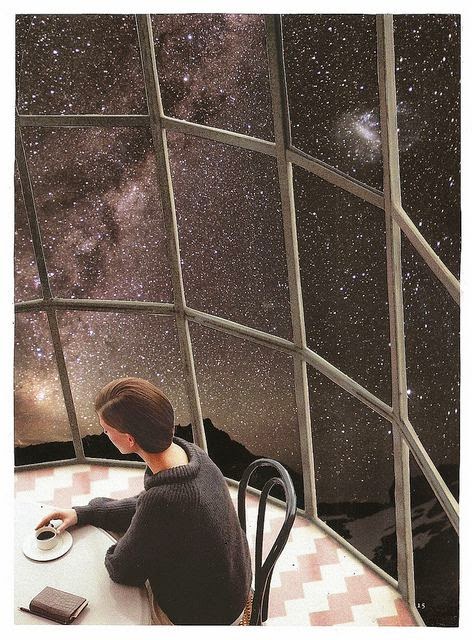
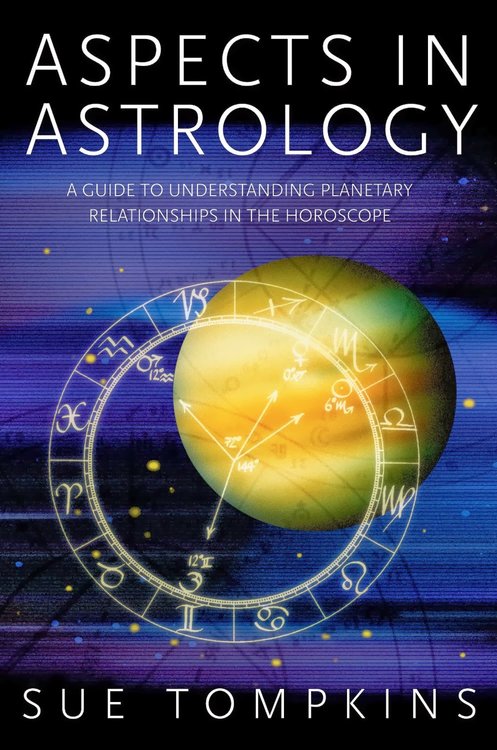







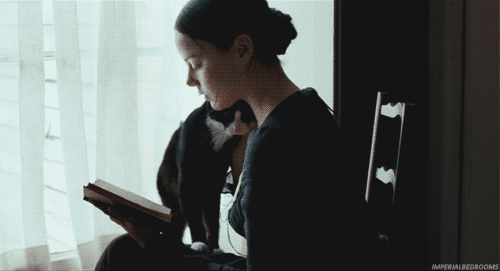
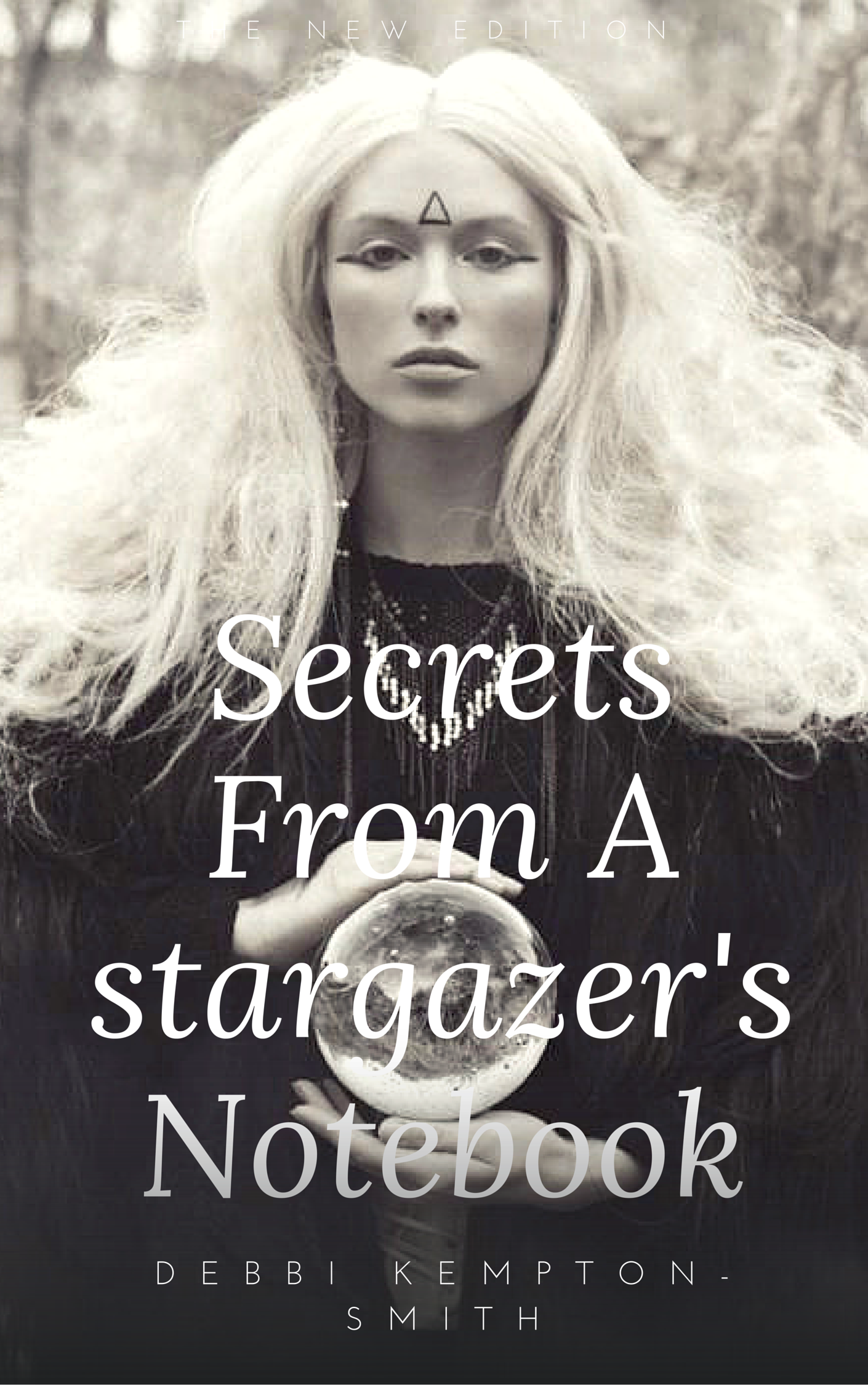
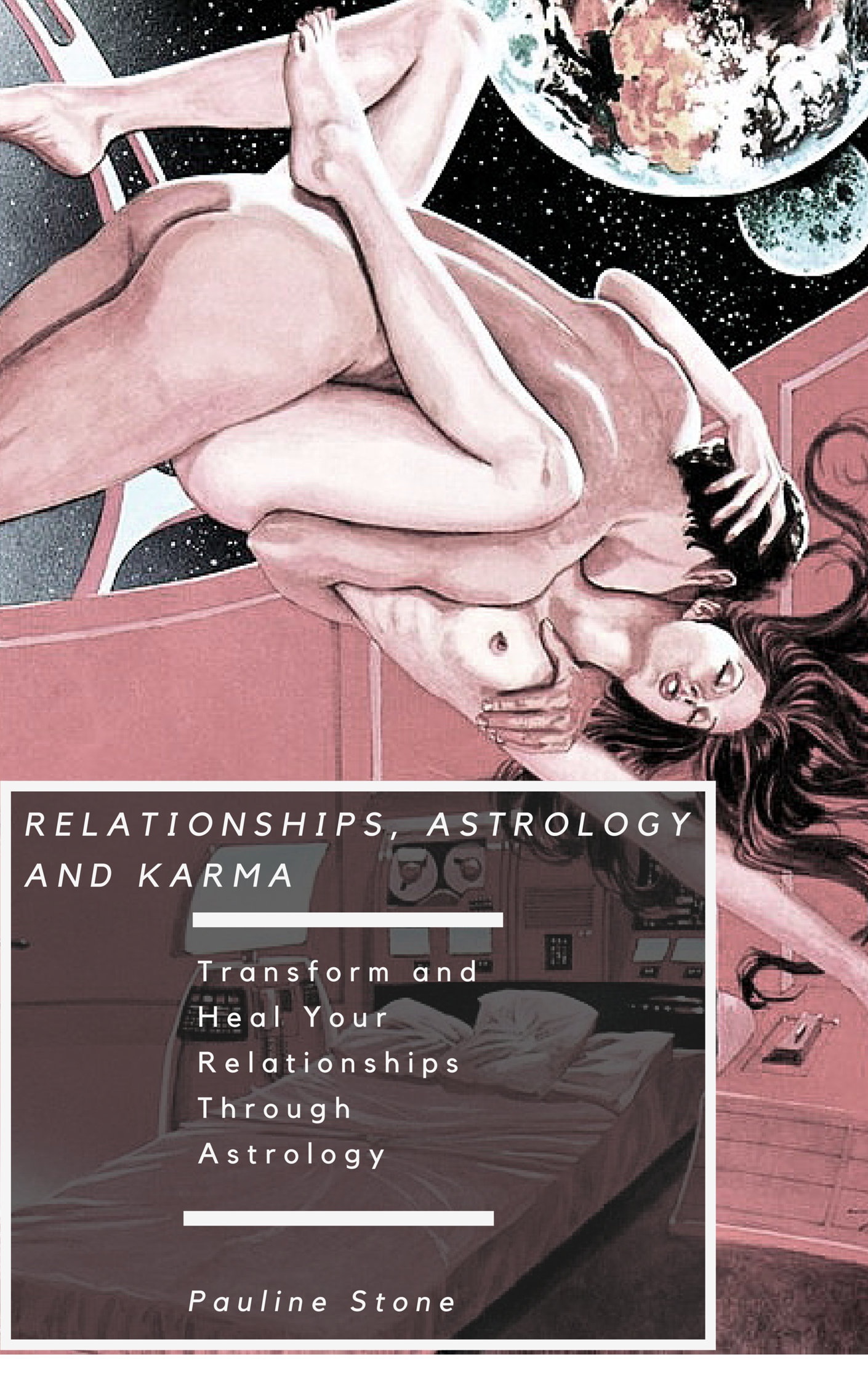
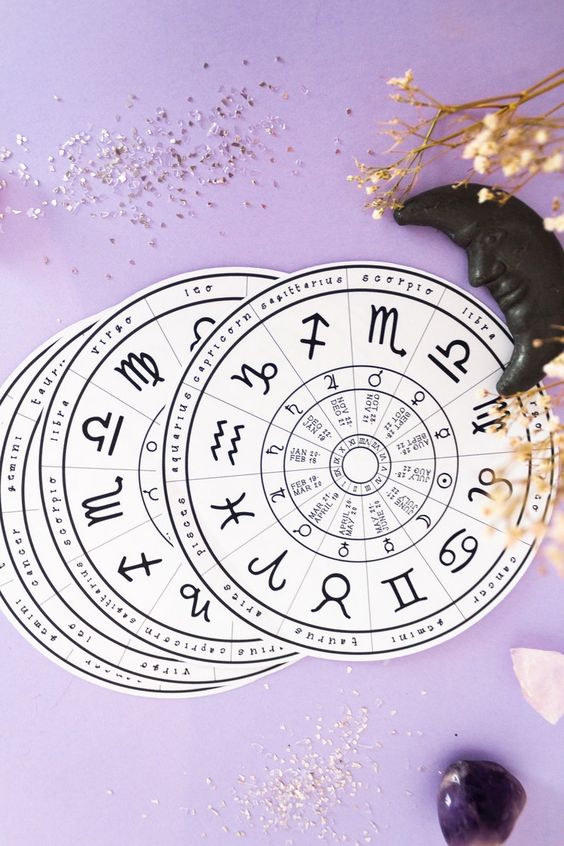
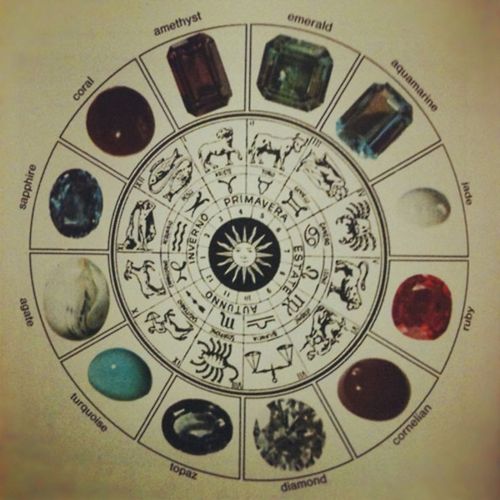





 Venus Trine Pluto: Dark Desires
Venus Trine Pluto: Dark Desires
 Mars Conjunct Pluto Synastry
Mars Conjunct Pluto Synastry
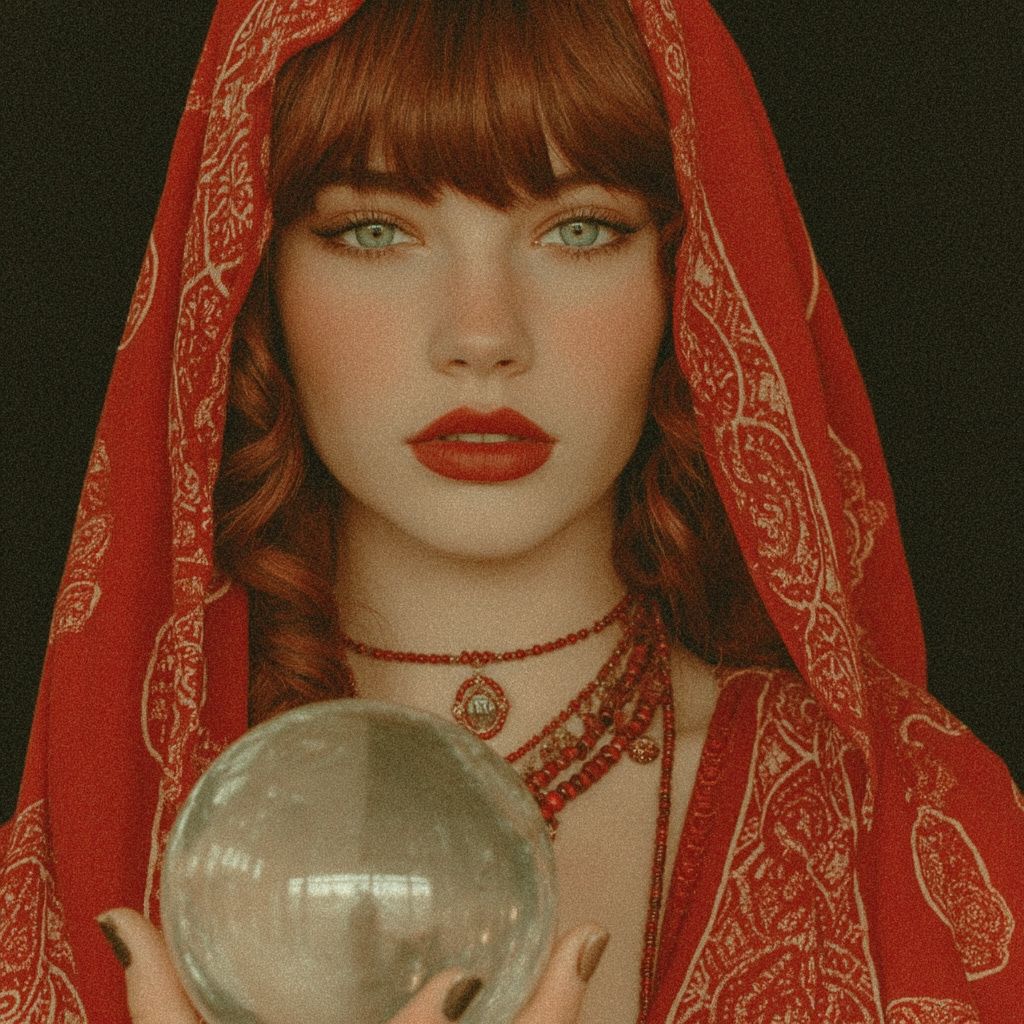 Moon Conjunct Mars Natal Aspect
Moon Conjunct Mars Natal Aspect
 Venus-Pluto Synastry: A Love So Powerful That It Might Just Kill Them
Venus-Pluto Synastry: A Love So Powerful That It Might Just Kill Them
 Sun Square Pluto Synastry: You’ve Got That Power Over Me
Sun Square Pluto Synastry: You’ve Got That Power Over Me
 Saturn in the 1st House: From Self-Doubt to Lasting Identity
Saturn in the 1st House: From Self-Doubt to Lasting Identity
 Venus Trine Mars Synastry
Venus Trine Mars Synastry
 Reflections on a Past Venus-Pluto Synastry Aspect
Reflections on a Past Venus-Pluto Synastry Aspect
 The Scorpio Teenager
The Scorpio Teenager
 Mars-Pluto Synastry: Something Quite Dark and Dangerous
Mars-Pluto Synastry: Something Quite Dark and Dangerous
 Mars in Aquarius: Sex drive
Mars in Aquarius: Sex drive
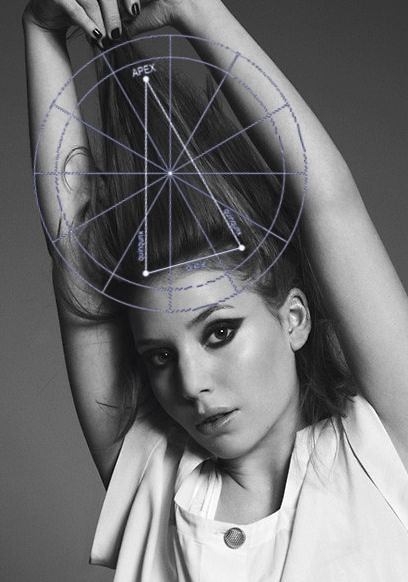 The Yod Aspect Pattern: The Mystical Power of the “Finger of Fate”
The Yod Aspect Pattern: The Mystical Power of the “Finger of Fate”
 Sun Square Pluto Natal Aspect: I Am Titanium
Sun Square Pluto Natal Aspect: I Am Titanium
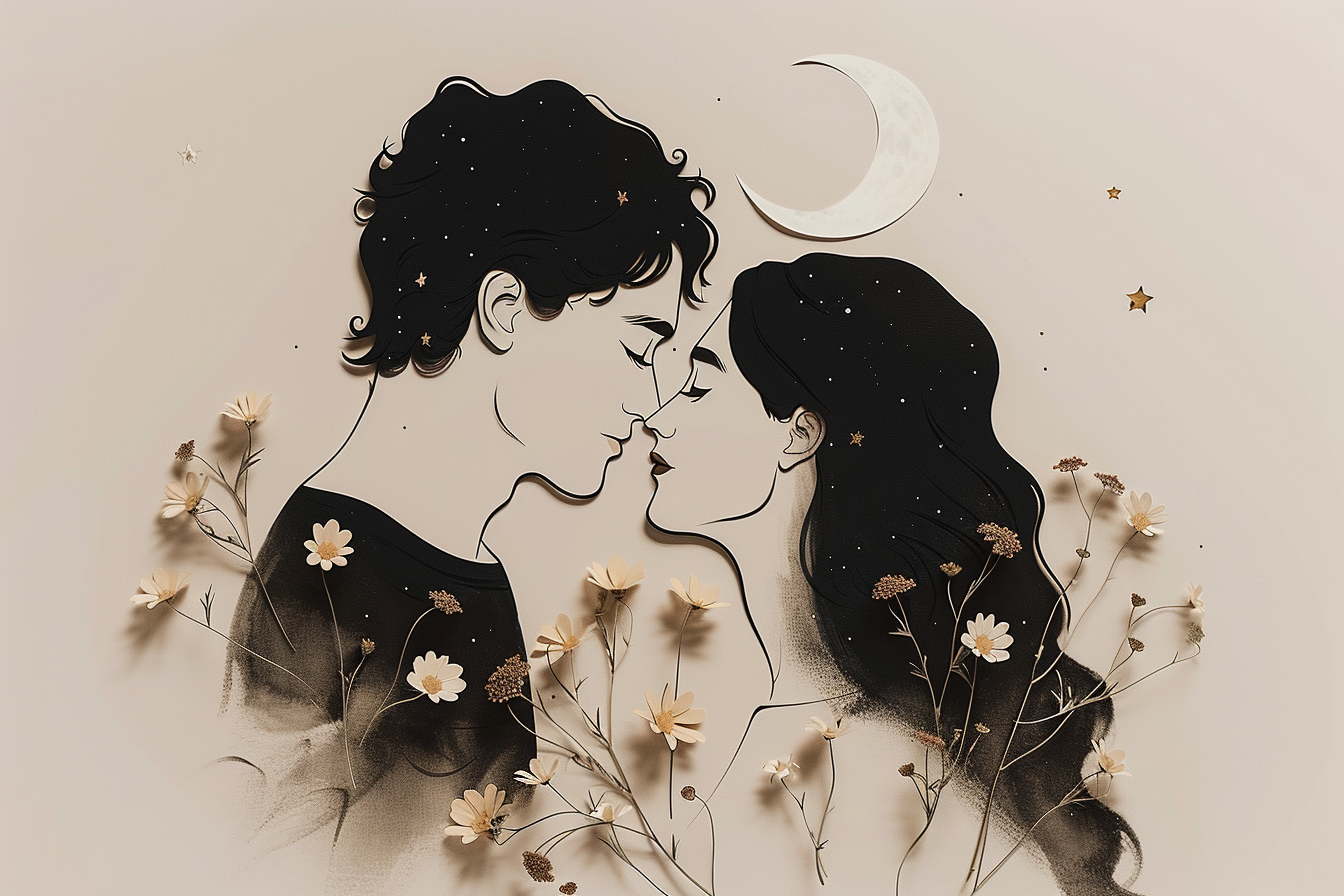 Emotional Understanding: Moon Trine Synastry Aspects Interpreted
Emotional Understanding: Moon Trine Synastry Aspects Interpreted
 Uranus Transits: 1st House: Winds of Change:
Uranus Transits: 1st House: Winds of Change:
 Moon Conjunct Pluto Synastry
Moon Conjunct Pluto Synastry
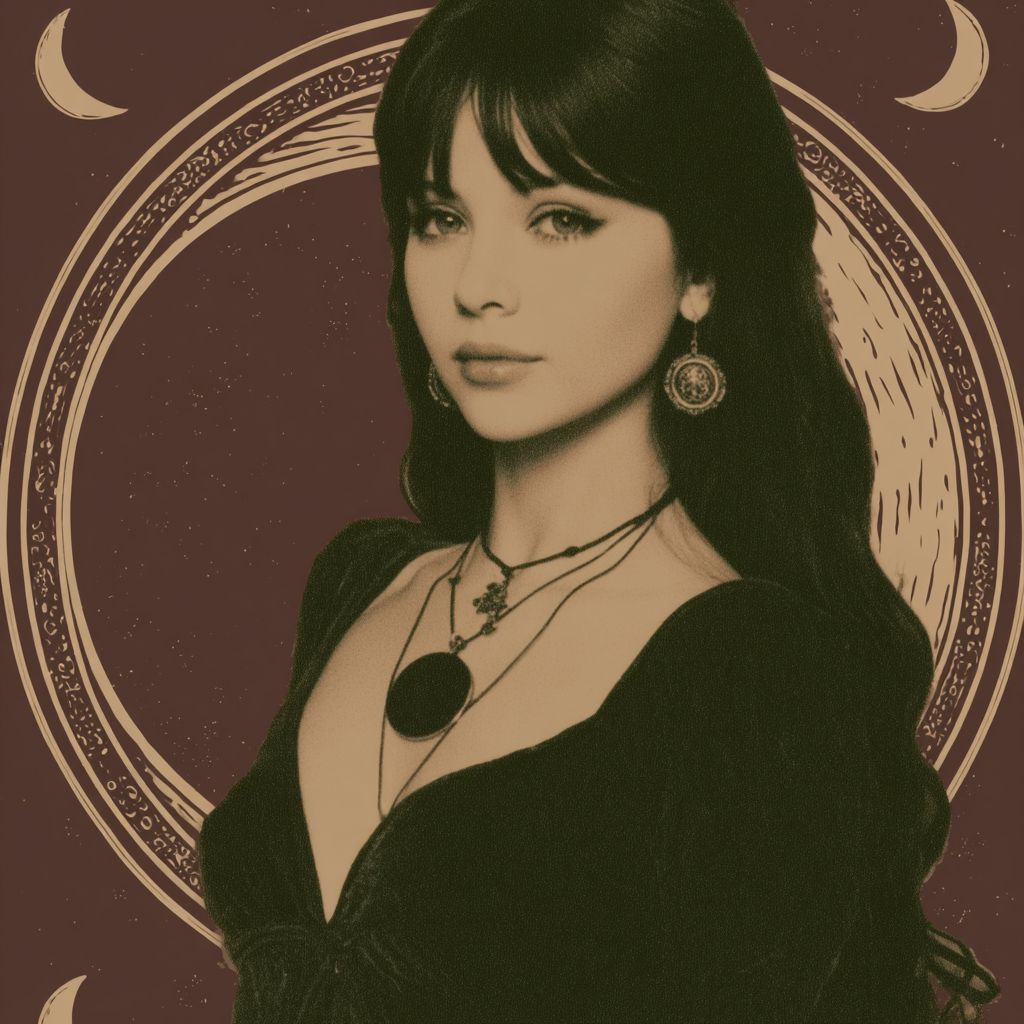 The Moon: The Goddess of the Night
The Moon: The Goddess of the Night
 Venus Conjunct Neptune Synastry: Euphoria and the Aftermath
Venus Conjunct Neptune Synastry: Euphoria and the Aftermath
 Saturn Transits Mars: When the God of Time Meets the God of War
Saturn Transits Mars: When the God of Time Meets the God of War
 Pluto in Libra in the 2nd House: Lessons on Self-Worth and Financial Independence
Pluto in Libra in the 2nd House: Lessons on Self-Worth and Financial Independence